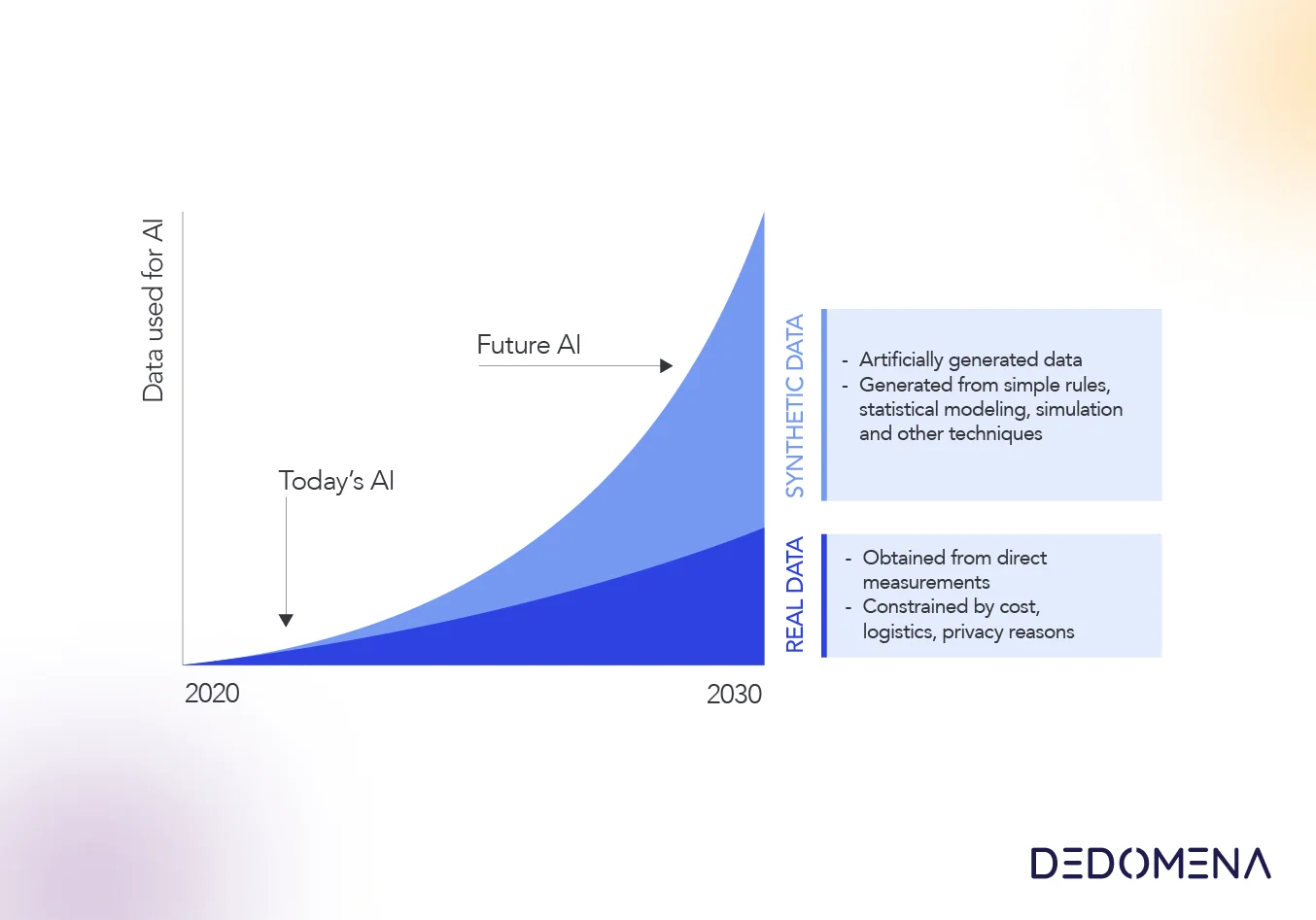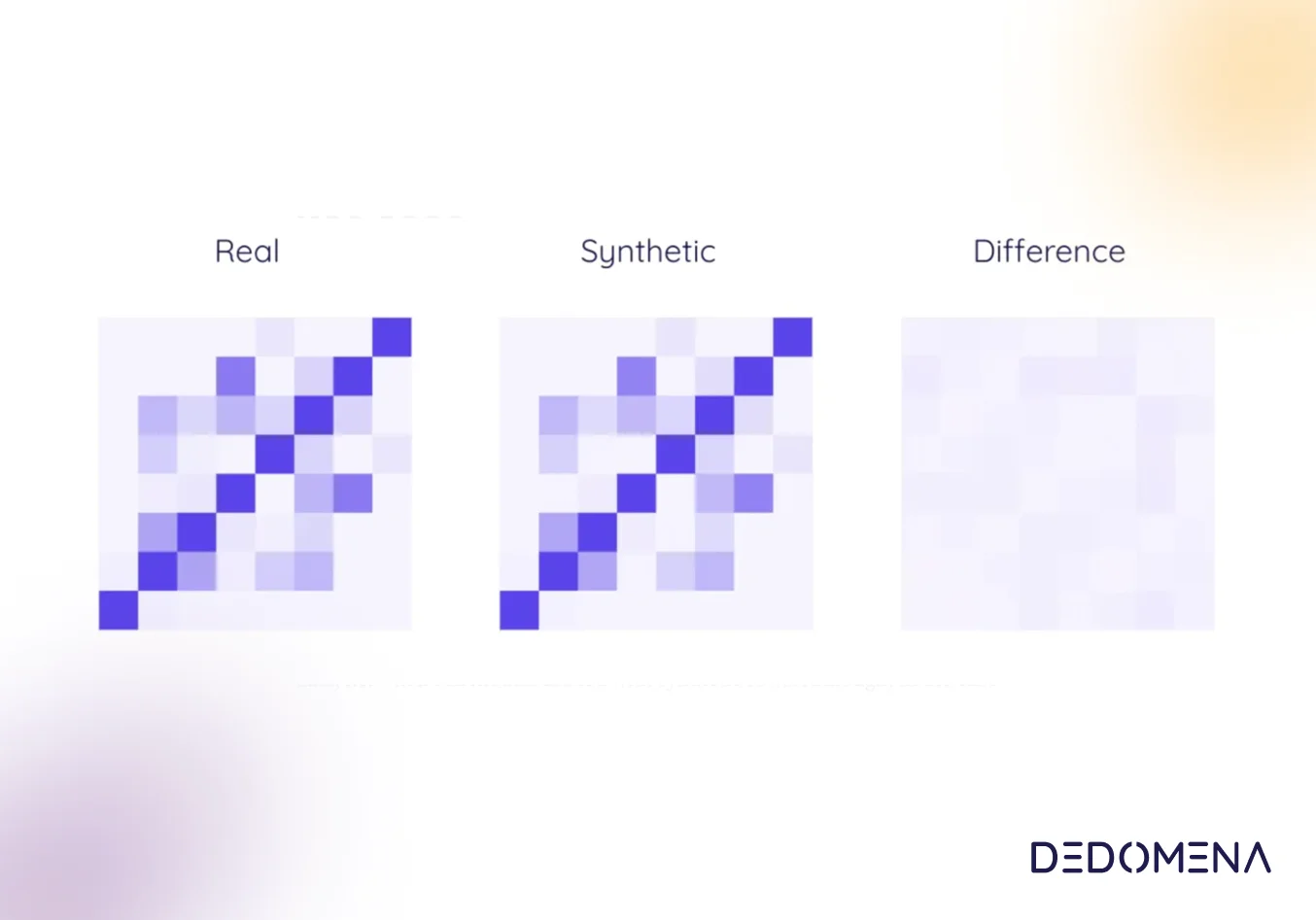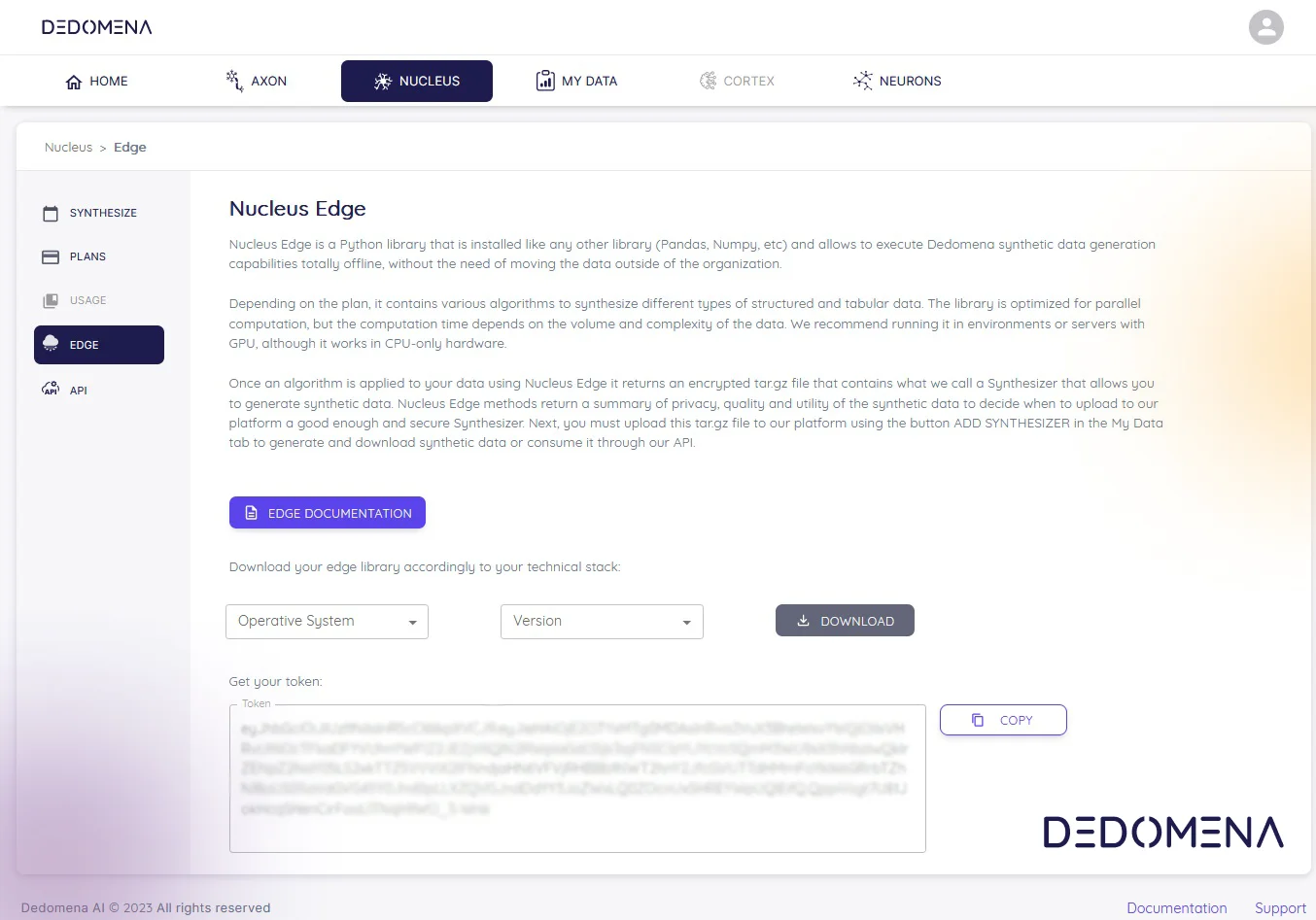Now that you have a good understanding of what synthetic data means (if not, I would highly suggest reading the previous article “What is synthetic data and why is it so important?”), we will look at the benefits of data synthesis overall.
The benefits of synthesized data can be dramatic. Synthetic data can make impossible projects doable, significantly accelerate AI initiatives, materially improve ML outcomes, and more importantly and as a consequence of the prior, immensely magnify the monetization of the most precious asset for any company (after the customer, of course), which is data.
Facilitating data access & collaboration
Data access issues are ranked in the top three challenges faced by data-driven companies when implementing AI. For this type of organization, data is needed throughout most of the so-called data value chain. Data is needed to train and validate ML models, testing software applications (and applications that use AI models), but also for evaluating AI technologies developed by others.
Current privacy regulations, such as General Data Protection Regulation (GDPR) in Europe and California Consumer Privacy Act (CCPA) in the United States, to name a few, impose strict constraints on using personal data for a secondary purpose. At the same time, customers are getting edgy about how their data is used and shared within the organization or with third parties, especially for commercial purposes.
Data synthesization provides organizations with realistic data to work with without risking customers' privacy. Given that this synthetic data could not be identifiable, privacy regulations would not apply, and obligations of additional consent from customers to use their data for secondary purposes would not be required.
Strengthen ML models
If synthetic data is starting to gain momentum is due to the need for massive amounts of training data for machine learning, specially for neural networks algorithms. According to Gartner1, 25% of training data for AI will be synthetically generated by 2022, and 60% of the data used for the development of AI and analytics solutions will be synthetically generated by 2024.
Machine learning models can be substantially improved by training on synthetic data. In fact, synthetic data for machine learning can be considered better than real data for different reasons. Statistically speaking, there are two main factors why synthetically generated data can help AI algorithms to learn and understand behaviours and hidden patterns in the data. First, by providing more samples than available in the original dataset and second, helping to increase the number of samples of minority events that would otherwise be under-represented in the real data. Data-driven organizations have no choice but to rely on data augmentation techniques for two main reasons: accuracy and time. Every data collection process is associated with a cost in terms of money, human effort, computational resources, and, of course, time consumed in the process.
Augmented data quality
Data scientists and AI developers in many organizations often make use of public datasets or “open source” data in order to build and train ML models and AI applications, given the difficulty in getting access to real sensitive data. Public datasets lack diversity and heterogeneity, and most of the time are not well matched to the problems they are trying to solve.
On the other hand, data labelling for supervised learning tasks can be time consuming and error prone. By generating synthetic labeled data, companies will accelerate model development and, at the same time, ensure high accuracy in the labelling process.
Springy exploratory analyses
Synthetic data can also be used in an exploratory manner. Then, after knowing the interesting and insightful results from the synthetic data, data scientists can go through the more complex process of getting the real data; processes that normally require a full protocol and multiple levels of approvals.
Also, synthetic data is useful for training an initial model before all the real data needed is accessible. Then, some months later, these models can be used as a starting point (pre-trained model to then fine-tune) for training with real data, hence significantly resulting in a more accurate model while reducing computation time.
Speed up product development and testing
Data is needed to develop or test a product or solution before it’s released. However, such data either does not exist or is not available to the developers and/or testers.
Synthetically generated data will also enable building data products and testing new applications and environments for desired outcomes before putting them into production or making the migration. Using synthetic data for building new customer-centric products is more efficient and cost-effective compared to authentic data.
Nowadays, many organizations are developing numerous AI-based applications using synthetic data. For instance, autonomous cars and robots have been developed and trained with synthetic data and can learn new tasks after seeing an action performance only once. Other companies are introducing AI-powered smart systems to monitor patterns in customer behaviour with the help of synthetic data. Also, for companies shifting to cloud infrastructure in a highly growing environment, synthetic data allows them to test future performance scenarios at the lowest costs without negatively impacting user experience. The list goes on. Opportunities are endless for data-driven companies when they adopt synthetic data into their value creation process.
References
1. Our Top Data and Analytics Predicts for 2021, Andrew White, January 12, 2021.


















































